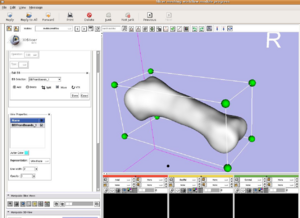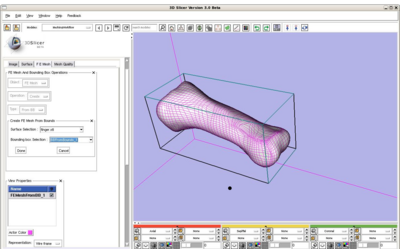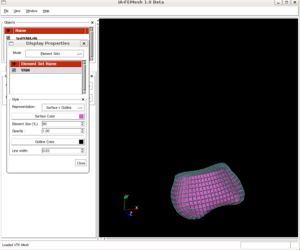Novel Hexahedral Meshing Algorithms
From NAMIC Wiki
Home < Novel Hexahedral Meshing Algorithms
Objective:
- Develop and integrate novel hexahedral meshing algorithms into the NA-MIC kit
Progress:
- Base projection algorithms have been developed and will be integrated into the toolkit. The algorithms have been implemented in KWWidgets in IaFeMesh to simplify integration into Slicer3.
- The base code and algorithms have been brought into Slicer3 for integration within the GUI and MRML. Curt Lisle has been working on a this integration.
- The sort term goal is to get a single editable bounding box working within Slicer3 for the next release.
- Projection based morphing and mesh interpolation will be required.
- Include export to Abaqus format
- Develop mapped meshing techniques that include an FE based solution using ITK that registers a template mesh with a subject specific surface.
- Building of meshing code has now been turned on by default for the latest Slicer3 release.
- Fully support all bounding box editing options
- Vertex manipulation
- Add
- Delete
- Split
- Merge
- Extrude
- Face manipulation
- Allow the user to undo and redo operations - This should be supported by the inherent logic in the MRML scene description.
- Fully support all bounding box editing options
- Extract mesh material properties from the images
- Export to Abaqus format
To Do
- Develop testing modules using the GUI framework being developed by Kitware.
- Refine integration with Slicer. This is mainly related to the handling of data objects between Slicer3 and the meshing module interface.
Key Investigators:
- Iowa: Nicole Grosland, Vincent Magnotta, Kiran Shivanna, Curt Lisle, and Steve Pieper
Links:



